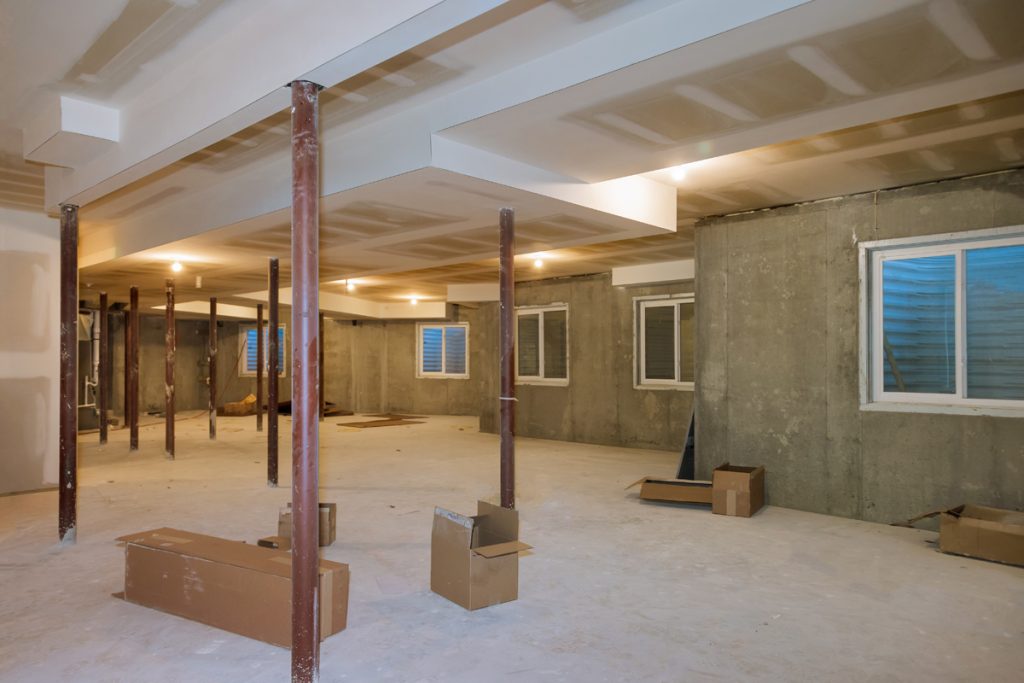Cover Insulation in Basement Ceiling. Covering insulation in your basement ceiling not only enhances the visual appeal of the space but also improves energy efficiency and noise control. This guide explores various methods and considerations for effectively covering insulation in your basement ceiling.

Why Cover Insulation in Basement Ceiling?
Covering insulation in the basement ceiling offers several benefits:
- Aesthetic Improvement: Creates a finished look that enhances the overall appearance of the basement.
- Energy Efficiency: Helps in maintaining consistent indoor temperatures by reducing heat loss.
- Noise Reduction: Acts as a sound barrier between floors, minimizing sound transmission.
Methods to Cover Insulation In Basement Ceiling
Installing Drywall or Ceiling Panels
Installing drywall or ceiling panels is a popular method for covering basement insulation:
- Preparation: Ensure insulation is properly installed and any gaps are sealed.
- Installation: Secure drywall or panels to ceiling joists using appropriate fasteners.
- Finishing: Apply joint compound, sand, and paint for a polished finish.
Using Drop Ceiling Tiles
Drop ceiling tiles offer a versatile and accessible option for covering basement insulation:
- Installation: Install a grid system and insert tiles for easy access to utilities and plumbing.
- Variety: Choose from different tile materials and designs to suit your basement decor.
- Maintenance: Easily replace damaged tiles or access utilities above the ceiling.
Spray Foam Insulation
Spray foam insulation can be applied directly to basement ceiling insulation:
- Sealing Gaps: Helps in sealing gaps and cracks, improving energy efficiency.
- Application: Professional application ensures even coverage and effectiveness.
- Cost Consideration: Evaluate upfront costs versus long-term energy savings.
Considerations Before Covering Insulation in Basement Ceiling
Before proceeding, consider these factors:
- Moisture Control: Ensure basement moisture issues are addressed to prevent mold or mildew.
- Access Needs: Consider access points for utilities or future repairs when choosing a covering method.
- Fire Safety: Follow local building codes regarding fire-resistant materials if applicable.
Pros and Cons of Different Covering Methods
Each method has its advantages and considerations:
- Drywall: Provides a seamless finish but may reduce access to utilities.
- Drop Ceiling: Offers easy access but may not provide the same aesthetic as drywall.
- Spray Foam: Excellent for sealing but may require professional application.
Maintaining Covered Basement Ceilings
Maintain your covered basement ceiling to ensure longevity and performance:
- Regular Inspection: Check for signs of moisture or damage.
- Cleaning: Dust or vacuum as needed to keep the area clean.
- Repairs: Promptly address any issues such as water leaks or cracks.
Cost Considerations
Costs vary based on materials, labor, and the complexity of the project:
- Budget Planning: Estimate costs for materials, labor if hiring professionals, and any additional tools or supplies.
Read too: Striped Schoolhouse Ceiling Light Fixtures: Unveiling the Timeless Charm
Conclusion
Covering insulation in your basement ceiling is a beneficial step toward improving both the aesthetics and efficiency of your home. By understanding different methods, considerations, and maintenance tips, you can choose the best approach to achieve a comfortable and attractive basement environment.